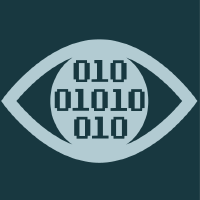Topic Menu
► Topic MenuTopic Editors




Extended Reality (XR): AR, VR, MR and Beyond
.jpg)
Topic Information
Dear Colleagues,
In recent years, virtual and augmented reality usage scenarios have significantly changed, moving from a specialized usage for research purpose only to a wider employment for a huge number of market applications and a significant number of users. This new situation has stimulated the growth of an impressive number of solutions in different domains, from military to entertainment.
Technological improvements have been registered, especially in smartphone devices, such as in camera performance and features, which have allowed the possibility of creating a tangible interaction between the real and the virtual domain that could be perceived as a “window on the real world”. For this reason, some important brands have significantly involved virtual and augmented reality in their efforts to support their commercial strategies, focusing the attention on “mobile augmented reality” (MAR).
Moreover, AR/VR flexibility could support its sinergic usage with other technologies representing an “integration platform” for technology empowerment, for instance, in machine and deeep learing (AI), which particularly in the computer vision domain may be able to provide very disruptive solutions, e.g., in the medical domain for disease diagnosis and for precise surgey assistance. Minimal invasive surgical (MIS) technologies are another viable example where the combination bewteen real-world data, live camera images in real-time, and virtual objects, artificially generated three-dimensional medical images coming from trans rectal ultrasound or computed tomography/MRI, could provide a tangible support to medical tasks. Moreover, due to the present COVID-19 situation that will force a significant percentage of the workforce to work from home multiple days a week by the end of 2021, it will be necessary to provide a change of perspective in many collaborative tasks, such as conference calls, which are often undermined by the lack of a direct personal presence, for instance, by exploiting AR/VR technologies to create a more socially conducive environment where everybody can improve “social interaction”. Thus, given the current surge of AR/VR applications and the new scenario provided by the pandemic situation due to COVID-19, it is important to synthesize the current knowledge about the interactions and impacts between society and AR/VR latests and novel applications.
The aim of this Topic is to advance scholarly understanding of how these technologies can be used theoretically, empirically, methodologically, and practically, to understand how society and AR/VR interact with and impact each other, also in relation to COVID-19, which has completely modified many usage scenarios, and in which the possibility to exploit the power of “virtuality” in its different points of view is becoming fundamental to overcoming the limitations of human interaction and support.
Prof. Dr. Enrico Vezzetti
Dr. Barbara Motyl
Dr. Domenico Speranza
Dr. Luca Ulrich
Topic Editors
Keywords
- human machine interaction
- 3D modeling
- human body modeling
- augmented reality
- virtual reality
- product innovation
- product design
- augmented surgery
- augmented medical diagnosis
- augmented maintenance
- augmented education
- head mounted displays
- artificial intelligence
- computer vision
- education
- machine learning
- deep learning
- mixed reality
- extended reality
- xR
Participating Journals
| Journal Name | Impact Factor | CiteScore | Launched Year | First Decision (median) | APC |
|---|---|---|---|---|---|

Applied Sciences
|
2.5 | 5.5 | 2011 | 19.8 Days | CHF 2400 |

Journal of Imaging
|
3.3 | 6.7 | 2015 | 15.3 Days | CHF 1800 |

Sensors
|
3.5 | 8.2 | 2001 | 19.7 Days | CHF 2600 |

Electronics
|
2.6 | 6.1 | 2012 | 16.8 Days | CHF 2400 |

Diagnostics
|
3.3 | 5.9 | 2011 | 21 Days | CHF 2600 |

Preprints.org is a multidisciplinary platform offering a preprint service designed to facilitate the early sharing of your research. It supports and empowers your research journey from the very beginning.
MDPI Topics is collaborating with Preprints.org and has established a direct connection between MDPI journals and the platform. Authors are encouraged to take advantage of this opportunity by posting their preprints at Preprints.org prior to publication:
- Share your research immediately: disseminate your ideas prior to publication and establish priority for your work.
- Safeguard your intellectual contribution: Protect your ideas with a time-stamped preprint that serves as proof of your research timeline.
- Boost visibility and impact: Increase the reach and influence of your research by making it accessible to a global audience.
- Gain early feedback: Receive valuable input and insights from peers before submitting to a journal.
- Ensure broad indexing: Web of Science (Preprint Citation Index), Google Scholar, Crossref, SHARE, PrePubMed, Scilit and Europe PMC.

